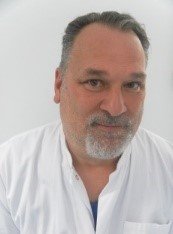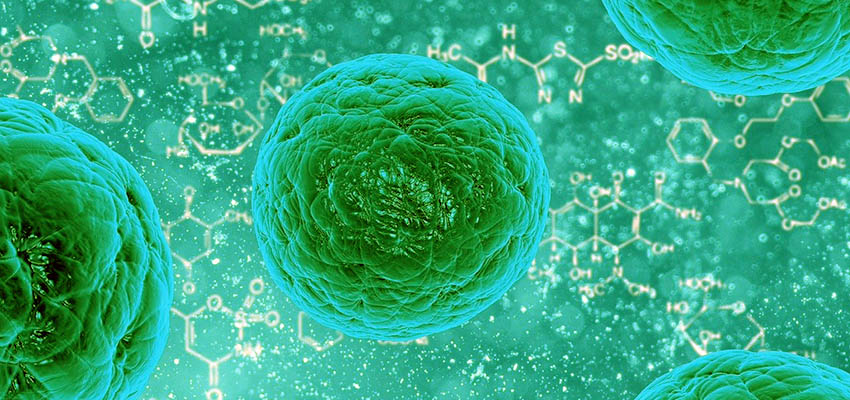In addition to the microbiological risks posed by human pathogenic bacteria, fungi and spoilage agents, increasing attention must also be paid to viruses in matters of food hygiene and consumer protection.
We are pleased that our "virus expert" Dr. Manfred Biebl (MB) from the AGROLAB laboratory site Dr.Blasy-Dr. Busse in Eching am Ammersee has agreed to an interview with the AGROLAB RADAR editorial team. The interview was conducted in German. Please find a translation below.
|
RADAR: |
Hello Mr. Biebl, Thank you for taking the time to answer some questions about the analysis of food-related viruses for our readers. Here's the first one right away: Which food viruses currently pose the greatest threat in the food industry and which foods are affected? |
|
MB: |
We see from our sample receipts of the past 12 months that it is mainly checks for noroviruses, especially in (berry) fruit or lettuce. Hepatitis A viruses are also often an issue. |
|
RADAR: |
Every now and then you read about noroviruses in the newspapers, for example when an infection has broken out on a cruise ship or in a nursing home for the elderly. What dangers do viral contamination of food pose for us? |
|
MB: |
When news of a norovirus outbreak hits the press, a large number of people are usually affected by eating contaminated food. Norovirus triggers acute gastrointestinal illness with violent vomiting diarrhea, which also leads to high fluid loss. For young children, the elderly and people with certain pre-existing conditions, the infection can therefore be life-threatening. |
|
RADAR: |
What measures can a food business or a chef take to avoid the risks of microbiological and especially viral contamination? |
|
MB: |
On the one hand, strict adherence to hygiene rules when handling food and thorough and frequent hand washing. In principle, these are exactly the measures that we should all have internalized by now due to the covid problem. On the other hand, fertilization or irrigation with fecally contaminated fertilizer or water can be a cause of illness. Unfortunately, this is always an issue in many of the producing countries. Therefore, depending on the origin of the goods, the food business operator must consider something like this in his risk analysis and include the checks in the control plan. |
|
RADAR: |
What safety precautions does a private laboratory have to take to allow lab technicians to work with such viruses in the first place? |
|
MB: |
This requires a so-called S2 laboratory. This means that higher safety precautions must be observed than for a normal microbiology laboratory. The laboratory rooms must be separated from the rest. Access is only possible for authorized persons in protective clothing and via an airlock. All work is performed in safety cabinets. |
|
RADAR: |
This also means that only a few specially trained laboratory staff are allowed to work with viruses at all, and their work is documented very precisely. |
|
MB: |
That's right. We have an experienced team and conduct regular training. In addition, the analyses are of course accredited. In addition, the laboratory is also under the official supervision of the relevant authorities in Bavaria. |
|
RADAR: |
Quite an effort. This is probably also the reason why there are only very few private laboratories that offer this analysis at all. But our RADAR subscribers are also interested in how this virus analysis is carried out in practice. Can you tell us something about it? |
|
MB: |
(laughs) Well, I won't tell you any corporate secrets, of course. Even when taking samples, it's important that the customer pays attention to hygiene and compliance with the cold chain. The laboratory work begins with the concentration of the viruses. This is followed by the actual analysis. We isolate the RNA from the sample, which is transcribed into DNA in a further step. (Editor's note: RNA ribonucleic acid, DNA deoxyribonucleic acid) This requires a lot of experience and special know-how. In this way, very small amounts of the genetic material are obtained, which still have to be amplified for reliable detection. This is done fully automatically in the so-called "light cycler". This process is called polymerase chain reaction, or PCR for short. The abbreviation is now familiar to everyone due to the Corona tests. The measurement results are collected automatically and then evaluated by a specialist. At the end, we know exactly which samples were contaminated. |
|
RADAR: |
How should samples be taken from customers, packaged and shipped? |
|
MB: |
As already indicated, correct sampling is a decisive factor for the quality of the measurement result. The sample should therefore be taken in such a way that it is not altered either during the sampling itself or during transport. This means, for example, that the cold chain must not be interrupted in the case of frozen berries. This can usually be achieved by using insulated packaging, dry ice or freezer batteries. Our sales colleagues and the customer service representatives will be happy to provide tips for this and, if necessary, also provide suitable shipping materials. |
|
RADAR: |
Mr. Biebl, we thank you for these interesting answers and wish you and your team continued success! |
 |
Personal details: Dr. Manfred Biebl is a microbiologist and has been head of virus analysis at AGROLAB's Eching site since 2020. Every year, he and his team analyze more than 1,000 samples from all over Europe for viruses. |
YOUR PLUS: Would you like a quotation or do you have any further questions? Please contact our field service and customer support at your preferred AGROLAB laboratory location.
Author: Dr. Frank Mörsberger

 Contact
Contact

 Contact
Contact Career
Career